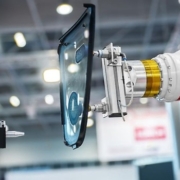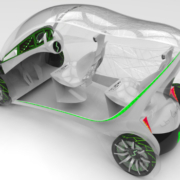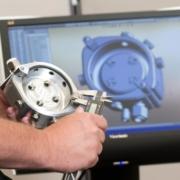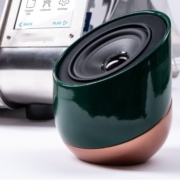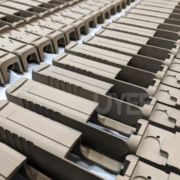How Much Do You Know About the Medical Product Development Process?
The hazards of launching and producing a new medical product on the market are many. Medical device prototyping is done in the early phases of medical device design development to discover possibilities and obstacles. We must evaluate the final design, function, and material at the prototype stage. A slight error or misunderstanding at the prototype stage may complicate manufacturing, lengthen production time, and result in severe financial loss.
Preliminary prototypes of medical devices are created in order to test their effectiveness in real-world settings. The design may seem ground-breaking at first glance, but touching it in 3-D brings practical difficulties to the forefront.It helps product development teams get rid of initial bottlenecks and save time throughout the process.
Let’s look at the most popular rapid prototyping methods to create prototypes for the medical products:
5 Common Rapid Prototyping Methods of Medical Products
Here are five strategies for swiftly creating prototypes for the medical profession.
-
Machining using CNC
CNC machining is a subtractive technology that quickly produces extremely precise, functioning prototypes. Modern, five-axis CNC machining is typically cost-effective for producing prototypes with complicated geometry. Various materials, including aluminum alloys, stainless steel, and rigid thermoplastics, may be used.
-
Machining and polishing of clear acrylic
Consider this strategy when dimensions of correctness and clarity are critical objectives. Making lenses and prisms for laser equipment and other medical devices is a breeze with clear acrylic machining.
-
Machining of Aluminum
Using aluminum machining to create prototypes provides benefits associated with dealing with a low-density, high-strength material. Aluminum alloys may be machined to close tolerances, and polishing can eliminate minor defects to enhance the product further.
-
RIM (Reaction Injection Molding)
RIM builds durable, lightweight prototypes with high-density skin and a lower-density core. Standard injection molding cannot produce prototypes with the level of detail that RIM can.
-
Casting by Vacuum
Vacuum casting is utilized to prototype medical equipment such as heart and organ models rapidly. A master mold is made of laser-etched silicon resin, while the prototype is made of an extra-soft resin.
Resources for Rapid Prototyping for Medical Product Development
Designers can now analyze and iterate device designs in days rather than months because of the widespread availability of rapid prototyping process capabilities. The produced product will completely determine the prototyping techniques and methodologies available. Consider the creation of a new point-of-care diagnostic reader, which is meant to be situated centrally inside small GP clinics. It consists of a reading device and single-use disposable cartridges.
This service is often referred to as solid freeform fabrication. However, with the proper people on the job and the correct technology and equipment, you can be certain that jobs are accomplished on time and to a high standard. Many firms and businesses that need rapid prototyping services were more than satisfied with the results. The personnel in charge of the jobs are very good at doing it. They have been practicing this trade for many years and are well-versed in its intricacies.
The primary goal of rapid medical prototyping is to obtain the most precise and faultless design possible. It isn’t easy to do this without first testing and analyzing the design, and the easiest method is to build models of pieces and evaluate how they perform. Prototype manufacturing enables designers to inspect and test portions of their design extensively before sending them to the final manufacture, saving time and money.
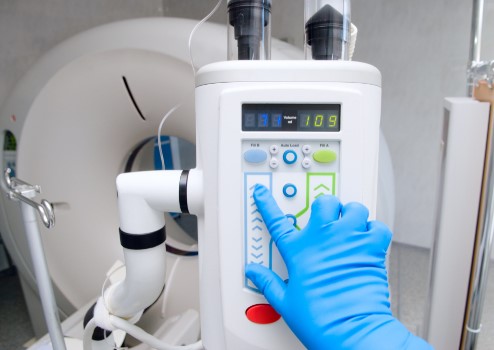
The 6 Advantages of Medical Device Prototyping
Product prototyping, regardless of the size and type, plays an important role in the product development process. Similar to any other product development, medical device prototyping can be done in several ways. Take a look at some of the benefits of medical device prototyping.
-
Modifications are possible
Assume you’re creating a competitive product to increase your acceptance rate. One method is to compare the designs hypothetically, while another is to hold the envisioned design of your future product in a 3D model and compare it to the rival product. Which out of these options do you believe is most effective? The prototype model clarifies the adjustments or upgrades that are necessary. The possibilities of discovering alterations and scope of improvement in prototyping are much more than in other methods of examining design feasibility.
-
Time and cost savings
Every new product design is subject to changes at a later time. Rapid prototyping saves the time and money it would otherwise spend adjusting everything over a single prototype. We may avoid errors since the problems are recognized at the fundamental level. The fault would have been propagated throughout the whole batch of manufacture. As a result, the whole batch would have been worthless and wasted time and money.
-
Customization Possibility
CAD provides a great deal of freedom. The prototype may be shaped and designed in various ways without affecting the other components. As a result, a concept may be shaped into many shapes and tested for economic, industrial, and manufacturability.
-
Communication
A real model communicates much more effectively than a virtual design. With a 3D Model in hand, it’s simple to express design, manufacturing, or idea issues.
-
User-friendliness in an end-user context
While developing an idea in your thoughts may seem the most helpful innovation. However, when you create a 3D model, you may test the product in the end-user environment. Most significantly, you can determine whether the product fulfills the intended user goal.
-
Regulatory adherence
During the prototyping stage, you may also determine if the procedures comply with the ISO regulatory criteria. If the process does not comply with regulatory requirements, you may adjust the processor component that does not comply with the guideline appropriately.
Conclusion
We hope you have got some understanding of the medical product development process after reading this article. Choose us when you require precise plastic components for medical purposes. We specialize in medical gadgets, physical/anatomical components, medical models, and related items. Whether you want prototypes, bespoke devices, or mass-production components, we will provide the parts on which you and your customers can rely.

